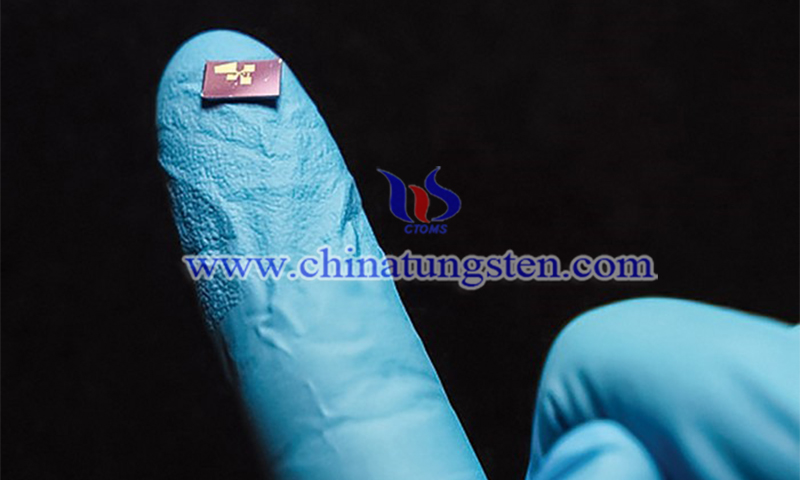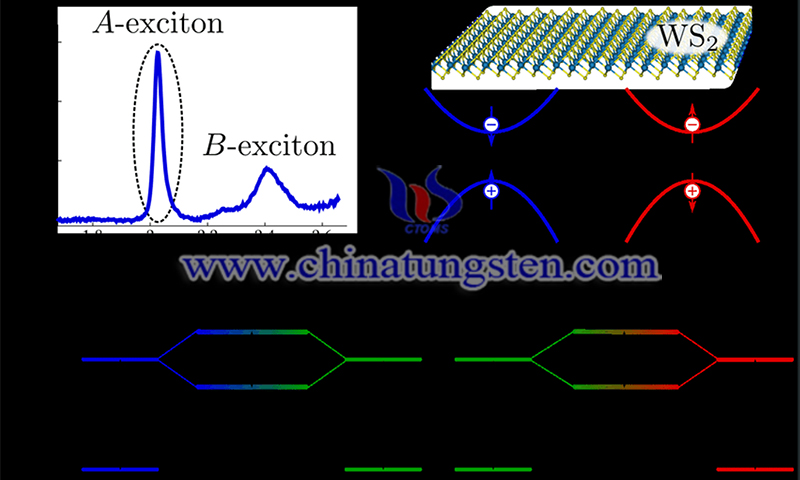Molybdenum Disulfide and Tungsten Diselenide Spectrophotometer Works at Room Temperature
- Details
- Category: Tungsten's News
- Published on Tuesday, 15 November 2022 10:48
Researchers have miniaturized a spectrophotometer consisting of molybdenum disulfide and tungsten diselenide onto a chip that can analyze visible and partial infrared spectra at any wavelength (Science 2021, DOI: 10.1126/science. Add 8544). According to its inventors, this device is the smallest device that works at ambient temperature and can be used in portable devices.

(Credit: Oregon State University)
Spectrophotometry is a primary method for sample analysis. The technique involves measuring how much light of a specific wavelength passes through or is emitted from a sample to determine its composition. Benchtop spectrophotometers must be large enough to accommodate the optics that diffract the light into the many photodetectors. Smaller spectrophotometers, which separate the wavelengths of light by calculation, are temperature sensitive and must be operated at low temperatures.
The new device relies on the photovoltaic properties of two materials composed of a single atomic layer of semiconductors: molybdenum disulfide and tungsten diselenide. The team, led by Aalto University engineer Zhipei Sun, applied a series of voltages to the device and shone monochromatic or broad-spectrum light at it with a laser. When the light hits the material, it produces a current that depends on the input wavelength and voltage.
The researchers then trained an algorithm to identify currents caused by incident light at different voltages and showed that a detector smaller than 200 microns could analyze broadband light with resolution and accuracy comparable to that of a desktop machine.

(Credit: Chervy T et al., rXiv preprint arXiv:1701.07972)
Alberto Morpurgo, a physicist at the University of Geneva who was not involved in the study, said in an e-mail that the technology's performance is "well beyond the current state of the art" and could one day expand researchers' insight into extremely far-infrared wavelengths.
The authors propose that their spectrophotometer chip could be loaded into a smartphone to enable on-site analysis, such as detecting counterfeit drugs. The chip could also be mounted in a drone and could be used for large-scale processes, such as monitoring crop growth. The chip is made with technology widely used in semiconductor foundries, so if a company wants to implement our spectrophotometer ...... we expect this could take only a few years."
(Article source: https://cen.acs.org/analytical-chemistry/spectroscopy/Smallest-yet-spectrophotometer-works-room/100/web/2022/11)
- Tungsten Manufacturer & Supplier, Chinatungsten Online: www.chinatungsten.com
- Tungsten News & Prices of China Tungsten Industry Association: www.ctia.com.cn
- Molybdenum News & Price: news.molybdenum.com.cn
- Tel.: 86 592 5129696; Fax: 86 592 5129797; Email: sales@chinatungsten.com



 sales@chinatungsten.com
sales@chinatungsten.com